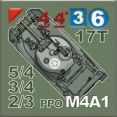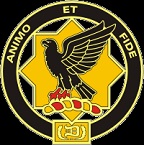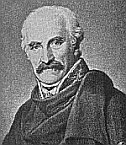Big B
Posts: 4870
Joined: 6/1/2005
From: Old Los Angeles pre-1960
Status: offline

|
quote:
ORIGINAL: Maliki
I only called it controversial because there seems to be a large difference of opinion between European and American historians on the AEFs impact.Most of which i think boils down to national pride.
This is very true, and I would like to point out that there has been a long revisionist movement by historians from across the pound to downplay the USA's contribution after the war. In Britain particularly, it has become chique for historians to barley even mention US involvment...kind of like ignoring the elephant standing in the room.
quote:
As for the Meuse Aragonne campaign..I touched upon this earlier.It was some of the worst terrain to conduct an offensive operation in on the Western Front.The AEF did very well in conducting the campaign there.This was the prize given to it for not giving in to French and British demands of it being broken up and used as cannon fodder in their armies.
In most aspects,given its inexperience,the AEF performed well.But..The fact of the matter is that the inexperience of high and mid-level officers in command and control of such large numbers of troops and the logistics behind that,led to a less than optimal performance. I would give the AEF a B+ for effort in its operations...and also the fact that the Germans were alarmed enough by its entry that they launched a last desperate offenisve before it could be utilized as a whole in theater.Also that they were very impressed with the high morale and doggedness of the forces it employed.
Once again the major impact was a pyshcological one upon the German army.
Well, I may disagree a small bit (the US Army certainly did have officers that needed to be and were replaced...but like I pointed out earlier - as mediocre as some US officers certainly were, that paled in significance compared to some of France and Britain's Senior Generals during the war).
Regardless - it is certainly true that US involvement made a massive psycological impact on the German High Command.
quote:
The war may have been won by the major Entente powers by the starvation of the German home populace even without its introduction.
Theoretically - perhaps. In the face of reality in 1918 with America as a nuetral..not a chance. The Germans would certainly have won the war outright on the battlefield in France long before the economic effects would have brought Germany down - in fact, under the assumption of US neutrality, with Russia out of the war and Eastern Europe pacified and Germany no longer fighting a two major front war - I see no reason to even expect that Germany would starve.
quote:
It is also important to to remember that the US was viewed as a minor power by France and Britain..along the lines of Portugal. ..Another major impact of it being that France and Britian did not face major social uphevial after wars end by it soaking up casualties that they would needed to have taken if the US had not entered the war.The two major powers were treading a very fine line,domestically,before Americas entry, ..Another major impact of it being that France and Britian did not face major social uphevial after wars end by it soaking up casualties that they would needed to have taken if the US had not entered the war.The two major powers were treading a very fine line,domestically,before Americas entry,
Well, Britain and France may have wanted to view the US as a power as signifigant as Portugal, but the reality was quite different and Britain and France knew that all too well - that was one of the reasons why Pershing alone, of all the Allied National commanders, didn't have to do what Foch said or wanted. Pershing not only was the only Supreme commander with the full backing of his government - but it was also well understood of the power the USA wielded among the Big Three (GB, FR, USA) the USA could basically call the shots by 1918...it wasn't until after the war that Britain and France took advantage of Wilson's political weaknesses visa-vie an isolationist Congress, and shoved him aside at the Peace Table.
But overal Maliki, we pretty much agree..
Here are the facts of America's contribution from the Doughboy Center (online)
AMERICA'S MILITARY CONTRIBUTION TO VICTORY IN THE GREAT WAR
When America entered the Great War in April 1917, it had a small constabulary Army with no experience in industrial age warfare. It was spread from the east coast across the nation and the Pacific to the Philippines. Nineteen months later the United States had a 2 million man force concentrated in France. Flanders and Italy. Towards the war's end the American Expeditionary Force or AEF, as it came to be known, was occupying more of the Western Front than Britain and all her Commonwealth Nations combined, lending combat divisions to all the allies and leading offensive operations against the best defended sector still occupied by the Germans. The AEF could claim when the Armistice came to have never failed on the defensive to turn back the enemy nor failed on the attack to achieve its aims.
Much has been made in the last 80 years by former allies, academic historians and documentary film makers of the rough fits and starts and frequent gross inefficiencies of the American troops and their commanders during the First World War. Claims have been made on television recently that the United States made minimal military contribution to the war's conclusion and [grossly inaccurately] that the US only fought in one battle. The intriguing new work by Niall Ferguson THE PITY OF WAR, an effort to explain the causes and dynamics of the war is the latest work to treat the AEF's contribution somewhat dismissively.
John J. Pershing was certainly not an original thinking strategist nor tactician and he was apparently unfamiliar with the management principle of span of control. Casualties were often heavier than should have been necessary and the US First Army got bogged down temporarily in its biggest operation, the Meuse-Argonne Offensive. But there were reasons for all this from a lack of experience by all the American soldiers starting with Black Jack Pershing to the insufficient number of trucks provided and the inadequate road network for the Argonne battle. Besides, the generals and doughboys of the AEF by the urgency of the moment had to learn by fighting; and the logistical problems of the Meuse-Argonne were all solved within a few weeks with the adversary driven from a position he had occupied and fortified for four years .
It is astonishing to discover other historians or commentators who miss the overarching point of the American participation in the Great War. In minimizing the value of the AEF on the battlefield they fail to analyze what its absence would have meant.
Without General Pershing's forces on the Western Front, Germany would have won the World War! By New Year's Day 1918, the British Army had been bled before Passchendaele, the French Army had suffered both defeat and mutiny from the Nivelle Offensive and Russia, then under Lenin, had withdrawn from the war. With its victory on the Eastern Front, the German Army had available over a million additional men to transfer to the West.
The key to Allied victory was Morale. It was the intense and undiminished morale of the US military combined with a staunch domestic backing which convinced the German they could no longer continue. When their morale collapsed on all fronts they sued for peace. The AEF with its operations broke the German morale.
Absent the arrival of the Americans, Ludendorff and Hindenburg did not have to make a desperate and exhausting roll of the dice as they did in resuming the offensive in March 1918. As Winston Churchill pointed out, with their reinforcements from the East they could have sat on their occupied sections of France and Flanders and dared the Entente to attack. Would Petain have ordered his enervated Poilus back on the offensive? Would Lloyd George have provided Douglas Haig the manpower to attempt a new variation on his 1917 campaign in the Ypres Salient? Without the presence of the AEF to provide the decisive margin it would have been most unlikely.
In addition to this strategic point, the specific contributions of the American armed forces to the demoralization and military defeat of the Central Powers can be easily charted chronologically:
• Spring 1917
The promise of a large AEF buoys French morale when their Army has been defeated and in mutiny.
American naval vessels allow the convoy system to succeed, keeping Britain in the war and facilitating the transport of the full expeditionary force to France, while freeing British ships to turn their blockade of Germany into what Capt. Liddell Hart called a "true stranglehold".
• Late 1917
American soldiers arriving in accelerating numbers compel the German High Command to attempt to win the war in early 1918 before the American presence can be decisive.
Initially, the doughboys are able to take over quiet sectors of the front, allowing British and French units to rest or redeploy to more active locales.
• May & June 1918
The AEF defends Paris on the Marne River line at Chateau Thierry.
• July 1918
American troops play the critical role in turning back the last German Offensive of World War I
Subsequently, US divisions totaling a quarter of a million men serve as the core attacking units in the Aisne-Marne counteroffensive of the Second Battle of the Marne.
• Late Summer 1918
The continuing avalanche of fresh American troops devastate the morale of both Germany's frontline soldiers and their high command; their presence also encourages the governments of Great Britain and France to allow their armies to continue the offensive operations necessary to expel the opposition from occupied territory.
• September 1918
At the St. Mihiel Salient and in the Argonne Forest, the US First Army mounts two major offensives on the same front within two weeks of one another; concurrently, the II Corps of the AEF collaborates with Australian troops in capturing the St. Quentin Canal in the Somme Sector.
• October 1918
55,000 Americans fighting under the 4th French Army capture Blanc Mont Ridge and force the abandonment of the Champagne by the German Army; King Albert of Belgium receives comparable American reinforcements for his assault in Flanders.
• November 1918
The reorganized First Army, despite enormous criticism, has met all the objectives of the Meuse Argonne Offensive and is threatening the Meuse-Antwerp line, the latest defensive position of the enemy.
The new US Second Army is deploying and initiating operations below Metz to the east. The AEF is now occupying 83 miles of the Western Front compared to 70 for the British Army and is planning to mount yet another major offensive on November 14th.
Only half of the expected AEF reached France before the Armistice; the rest were still training stateside. By November 11, 1918, 2,057,675 military personnel would arrive in France. Slightly over half of the 2 million+ were combat effectives and of the remainder about 30% had already become casualties.
By the War's end, the American units in France and Flanders commanded 83 miles of the 392 mile long Western Front. The other Allies held sections of the following lengths:
Belgian Army - 25 miles, British & Commonwealth - 70 miles, and French 214 miles.
< Message edited by Big B -- 11/3/2006 11:24:08 PM >
|
 Printable Version
Printable Version














 Great thanks for the list! I've seen these numbers differ some what. Does this list account for for KIA, WIA, and MIA or is it just KIA? As for the populations of the two countries they are now almost 66million each. Both countires have similar reasons for this and other differing factors aswell. I will have to check up on the historical populations, but I thought I read at one time that Great Britain got ahead.
Great thanks for the list! I've seen these numbers differ some what. Does this list account for for KIA, WIA, and MIA or is it just KIA? As for the populations of the two countries they are now almost 66million each. Both countires have similar reasons for this and other differing factors aswell. I will have to check up on the historical populations, but I thought I read at one time that Great Britain got ahead.
 ..Another major impact of it being that France and Britian did not face major social uphevial after wars end by it soaking up casualties that they would needed to have taken if the US had not entered the war.The two major powers were treading a very fine line,domestically,before Americas entry,
..Another major impact of it being that France and Britian did not face major social uphevial after wars end by it soaking up casualties that they would needed to have taken if the US had not entered the war.The two major powers were treading a very fine line,domestically,before Americas entry,
 New Messages
New Messages No New Messages
No New Messages Hot Topic w/ New Messages
Hot Topic w/ New Messages Hot Topic w/o New Messages
Hot Topic w/o New Messages Locked w/ New Messages
Locked w/ New Messages Locked w/o New Messages
Locked w/o New Messages Post New Thread
Post New Thread